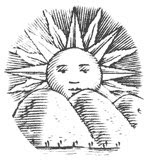
This bio shows the stature of the mayoralty of NYC in the 30's. Copeland, already US Senator from New York, was running against LaGuardia, to become mayor. No term limits then either. I wonder how many votes he got in the 1st Assembly District of Knickerbocker Village? I'm off to try and find out. "Republican switching to become Democract?" Remind you of anyone?
Royal Samuel Copeland (November 7, 1868 – June 17, 1938) was an American academic, homeopathic physician, and politician who held elected offices in both Michigan (as a Republican) and New York (as a Democrat). He represented New York in the United States Senate from 1923 until 1938.
Born in Dexter, Michigan to parents Roscoe P. Copeland and Frances J. (Holmes) Copeland, Royal Copeland graduated from the Michigan State Normal College (now Eastern Michigan University) with a bachelor's degree. In 1888, he taught school in Sylvan Township, Michigan. He graduated from the University of Michigan in Ann Arbor with a degree in medicine in 1889. After graduate studies in Europe, Dr. Copeland practiced medicine in Bay City, Michigan, from 1890 to 1895. Copeland was admitted to the Homeopathy Society of Michigan on May 21, 1890, and was made secretary of the society in October 1893. He was a professor of Ophthalmology and Otology in the University of Michigan Medical School's Homeopathic Department from 1895 until 1908.
During his time as a medical professor in Ann Arbor, Copeland was active in municipal politics. He served as Republican mayor of Ann Arbor from 1901 to 1903, as president of the Ann Arbor Board of Education from 1907 to 1908, and as president of the Ann Arbor Board of Park Commissioners.
On July 15, 1908, Copeland married Frances Spalding. The same year, Copeland moved to New York City to take a position as dean at the New York Flower Hospital and Medical College, a position he left in 1918 to serve as President of the New York Board of Health. He gained much positive public attention for keeping New Yorkers calm during the influenza outbreak of 1918.
In 1922, Copeland ran as a Democrat for the U.S. Senate, defeating first-term Republican Senator William M. Calder. Copeland was re-elected in 1928 over Republican challenger Alanson B. Houghton, the U.S. Ambassador to Britain and a former U.S. Congressman. Copeland was again re-elected in 1934, this time defeating future U.S. Congressman E. Harold Cluett.
During his three terms in the U.S. Senate, Copeland served as chairman of the U.S. Senate Committee on Rules and Administration from 1933 to 1936 and chairman of the Committee on Commerce from 1935 to 1938.
Copeland was close to the regular Democratic organization in New York, the boss-led Tammany Hall. He was a conservative Democrat and not especially supportive of his fellow New Yorker, President Franklin Roosevelt's New Deal policies. Copeland was known for his successful efforts to bring air conditioning to the Senate and also for his support for homeopathy.
In 1937 he won the Democratic nomination for Mayor of New York City, but lost in the general election to Republican incumbent Fiorello H. LaGuardia. Senator Copeland died in office on June 17, 1938 and was buried at Mahwah Cemetery in Mahwah, New Jersey.























No comments:
Post a Comment